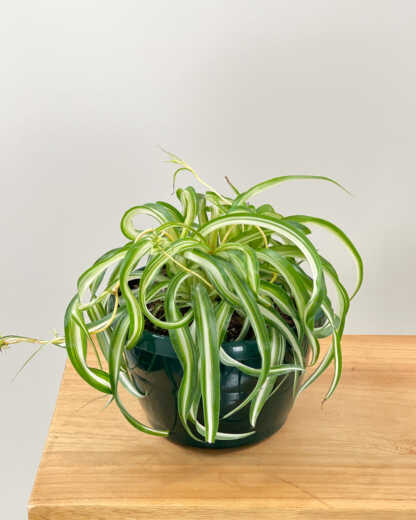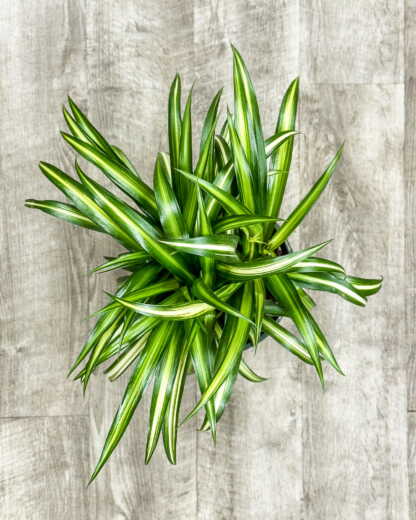Spider Plant Varieties
Spider Plants at a Glance
Spider plants are one of the most popular houseplants because they’re easy to care for, beautiful, non-toxic, and simple to propagate. They’re known by many common names including airplane plant, hen and chickens, ribbon plant and spider ivy. Although native to the tropical regions of Africa, it is now cultivated world-wide and naturalized in Australia. They all feature long, grass-like leaves which arch over the edge of the pot. Baby Chlorophytum plants remain attached and hang a foot or so below the mother plant on long shoots. All spider plants are sold in hanging pots and regular pots without hangers.
Spider Plant Care Information
Pests are usually not an issue, but if they do get infected, its usually by the usual suspects of mealy bugs and spider mites. An all-purpose indoor plant fertilizer works best but do not over-fertilize as they can be a bit salt sensitive. Fertilize every two months in the summer and spring.
Spider Plant Requirements
Botanical Name: Chlorophytum comosum
Light: They survive in most any light condition from deep shade to bright light, but thrive best bright indirect light.
Water: Spider plants like slightly moist soil. Let the top third of the soil dry out before giving watering thoroughly.
Soil: Light, loamy well-drained soil which retain moisture.
Humidity: Spider plants do well in virtually any humidity level.
Propagation: Spider plants can be propagated by division but the easiest way is by cutting off and planting the hanging babies.












